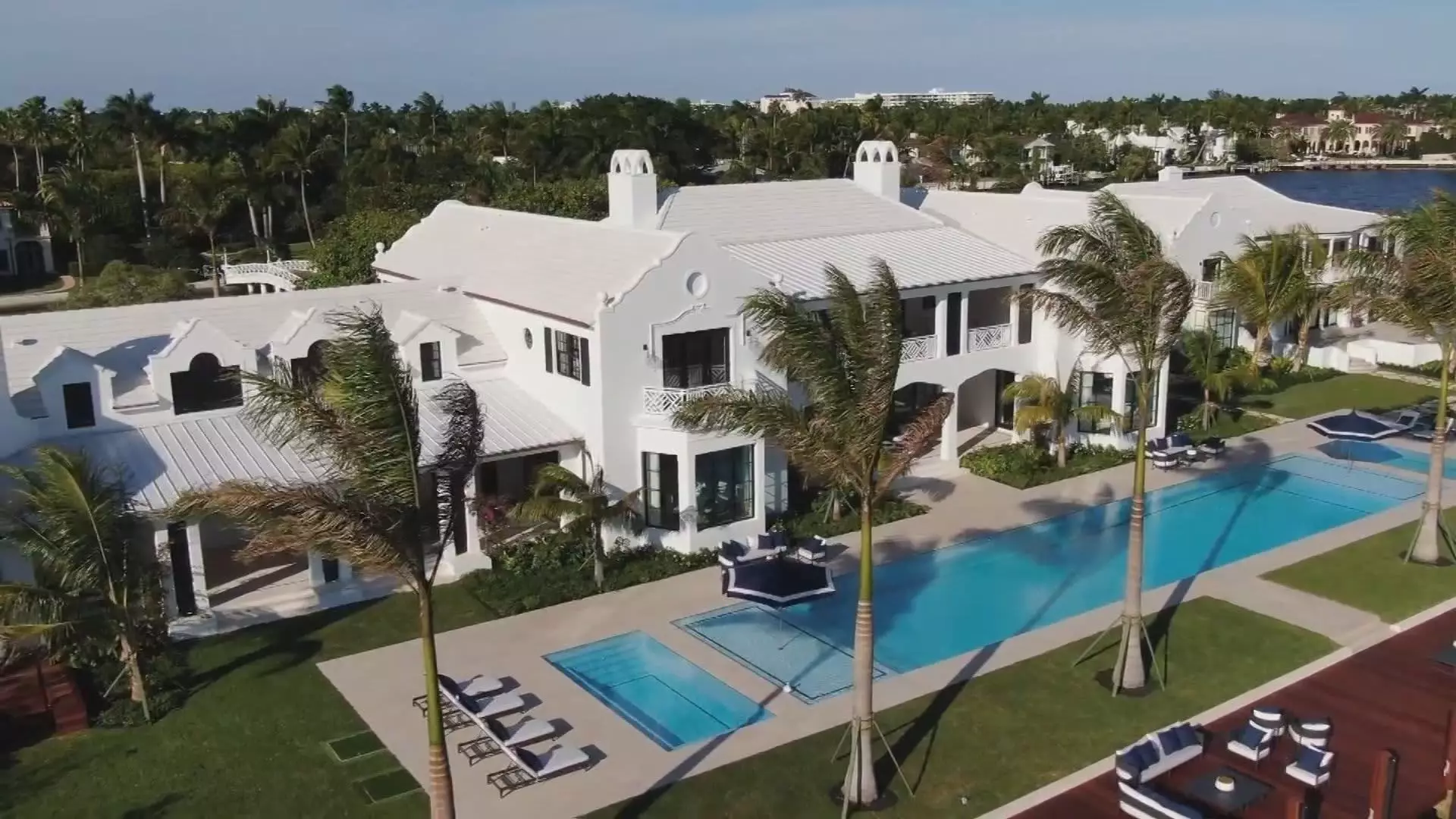The world of ultra-luxury real estate is often seen as a barometer for the economy, revealing how the wealthy navigate economic fluctuations. Recent reports published by real estate experts, notably Knight Frank, indicate a significant uptick in the sales of ultra-luxury homes in specific U.S. markets while many other global regions are experiencing downturns. The notable cities of New York, Miami, and Palm Beach are experiencing a surge in activity, raising questions about the dynamics of wealth, investment, and property desirability in today’s tumultuous market.
According to the latest data, Palm Beach led the charge with a remarkable 44% increase in homes sold for $10 million or more in the second quarter of the year. Close competitors Miami and New York also showed strong performances, witnessing increases of 27% and 16%, respectively. New York emerged as the leading market in this ultra-luxury price segment, recording the highest number of transactions for homes exceeding $10 million, totaling 72 sales—the city’s best showing in two years. Conversely, Los Angeles recorded a 29% decline in similar sales, primarily attributed to the recently introduced “mansion tax” that levies a 5.5% surcharge on properties above the $10 million threshold.
The stark contrast in performance among these luxury markets hints at the varying local economic conditions and tax environments that can significantly impact buyer behavior.
The second quarter was characterized not just by an increase in the number of transactions but also by several extraordinary sales. One of the highlights was the staggering $150 million purchase of a private island in Palm Beach, marking a significant investment by Australian infrastructure investor Michael Dorrell. Other notable transactions included a historic estate sold for $148 million in Palm Beach and a lavish penthouse at the Aman New York purchased for $135 million. These figures underscore the insatiable demand for trophy properties among the ultra-wealthy.
While the market is witnessing declining interest in some mature luxury markets, the appetite for exclusive properties remains fervent. The statistics indicate that demand for unique trophy properties is underpinned by the wealth accumulation occurring in various global money markets.
On an international scale, Knight Frank reported that sales of homes priced at $10 million or above fell by 4% to $8.5 billion across its eleven tracked luxury markets. Dubai, however, stood out, recording its position as a leader in ultra-luxury sales, showcasing 85 transactions during the second quarter. The allure of Dubai continues to grow, enticing ultra-high-net-worth individuals mainly due to its favorable tax structures and strategic positioning for international buyers.
Notably, in comparison to prior years, Dubai has seen a staggering jump in sales from only 23 transactions of this nature in 2019 to an impressive 436 sales in the last twelve months. This trend highlights the shifting dynamics of affluent migration toward regions that offer both investment value and lifestyle enhancement.
Meanwhile, London exemplified the challenges facing luxury real estate, suffering one of the steepest declines globally. A 47% drop in $10 million-plus sales has raised alarms about the potential effects of increasing taxation on the wealthy in the U.K. Such developments reveal the complex interplay between government policy and real estate market performance, particularly in high-stakes environments.
Despite uneven international trends, the outlook for the remainder of the year remains cautiously optimistic. Experts suggest that falling interest rates are likely to boost transaction volumes. As Liam Bailey, global head of research at Knight Frank, noted, the decline in rates could consequently lead to an uptick in sales as wealthy buyers leverage favorable financing conditions.
While we face a polarized luxury real estate market, it is clear that certain key regions are flourishing amid economic uncertainties. The juxtaposition of booming markets against declining ones emphasizes the need for investors to remain agile and informed as they navigate these ever-changing landscapes. Wealth, it seems, continues to find its way into the plushest corners of the real estate market, defying broader economic trends.

